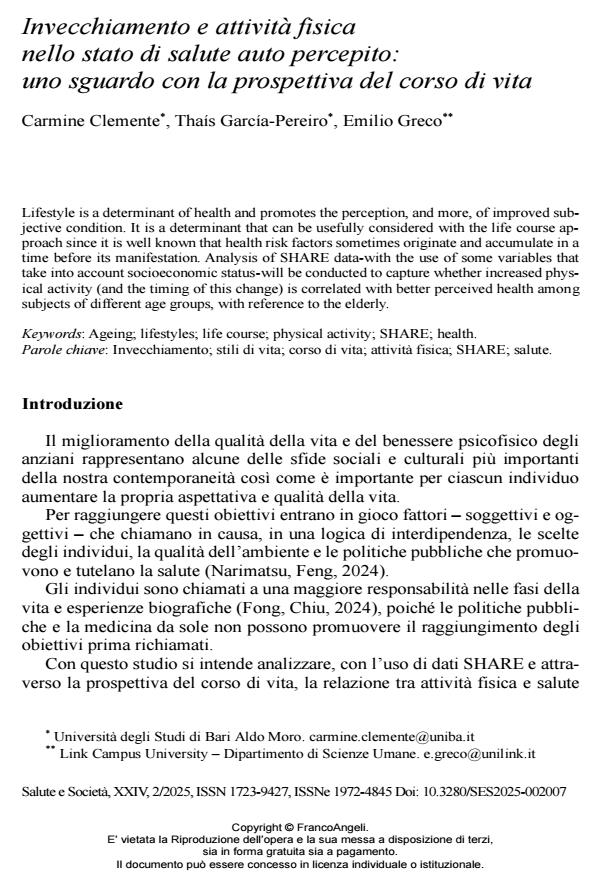Invecchiamento e attività fisica nello stato di salute auto percepito: uno sguardo con la prospettiva del corso di vita
Titolo Rivista SALUTE E SOCIETÀ
Autori/Curatori Carmine Clemente, Thaís García-Pereiro
Anno di pubblicazione 2025 Fascicolo 2025/2
Lingua Italiano Numero pagine 13 P. 77-89 Dimensione file 494 KB
DOI 10.3280/SES2025-002007
Il DOI è il codice a barre della proprietà intellettuale: per saperne di più
clicca qui
Qui sotto puoi vedere in anteprima la prima pagina di questo articolo.
Se questo articolo ti interessa, lo puoi acquistare (e scaricare in formato pdf) seguendo le facili indicazioni per acquistare il download credit. Acquista Download Credits per scaricare questo Articolo in formato PDF

FrancoAngeli è membro della Publishers International Linking Association, Inc (PILA)associazione indipendente e non profit per facilitare (attraverso i servizi tecnologici implementati da CrossRef.org) l’accesso degli studiosi ai contenuti digitali nelle pubblicazioni professionali e scientifiche
Lifestyle is a determinant of health and promotes the perception, and more, of improved subjective condition. It is a determinant that can be usefully considered with the life course approach since it is well known that health risk factors sometimes originate and accumulate in a time before its manifestation. Analysis of SHARE data-with the use of some variables that take into account socioeconomic status-will be conducted to capture whether increased physical activity (and the timing of this change) is correlated with better perceived health among subjects of different age groups, with reference to the elderly.
Parole chiave:Invecchiamento; stili di vita; corso di vita; attività fisica; SHARE; salute.
Carmine Clemente, Thaís García-Pereiro, Invecchiamento e attività fisica nello stato di salute auto percepito: uno sguardo con la prospettiva del corso di vita in "SALUTE E SOCIETÀ" 2/2025, pp 77-89, DOI: 10.3280/SES2025-002007